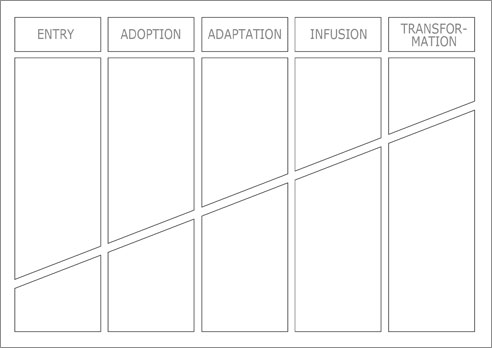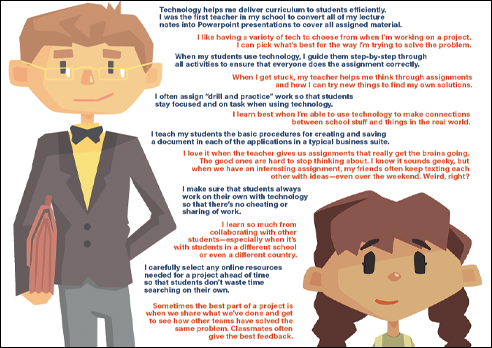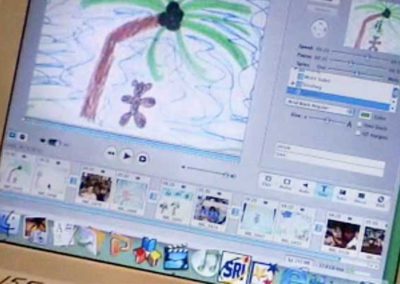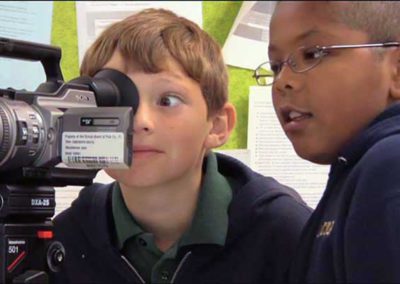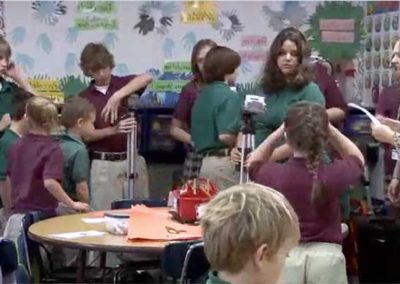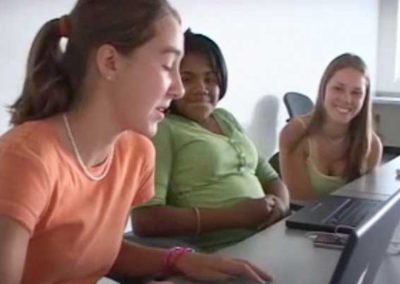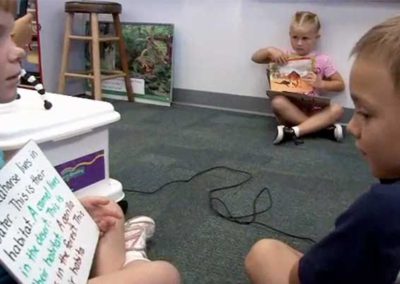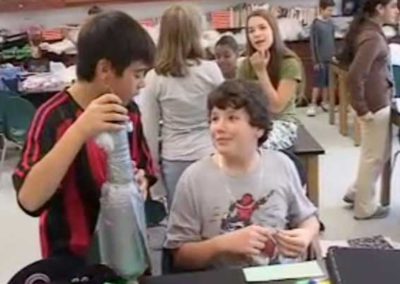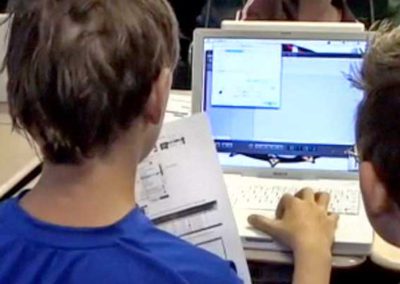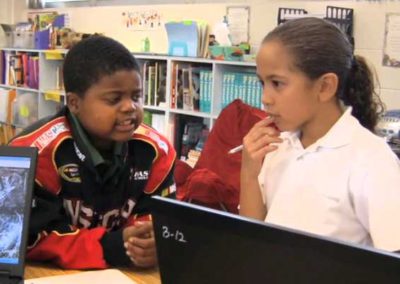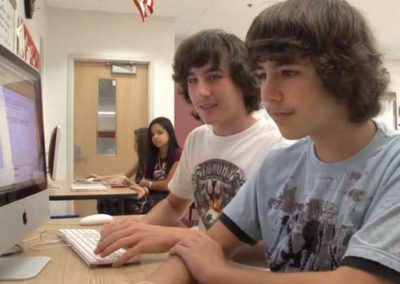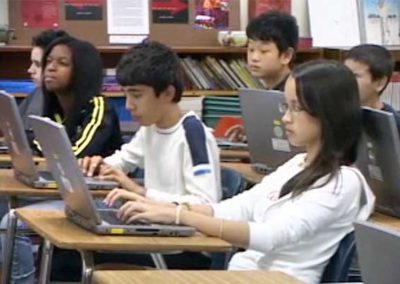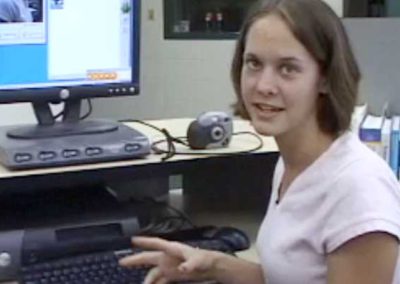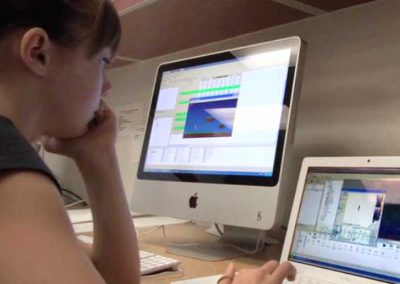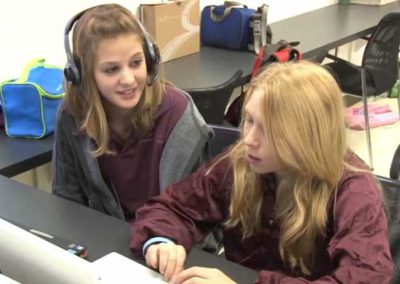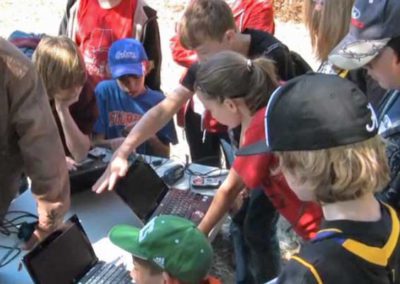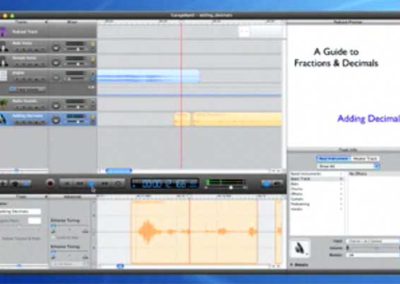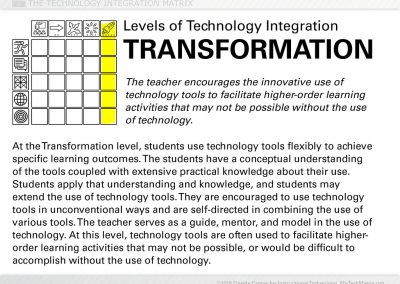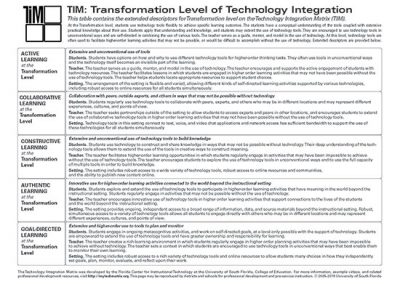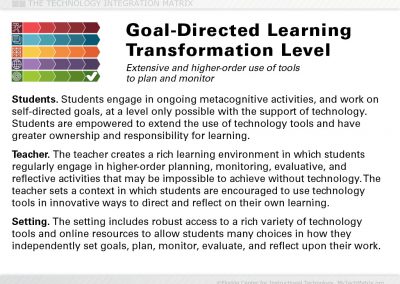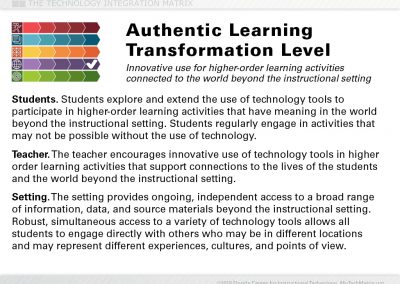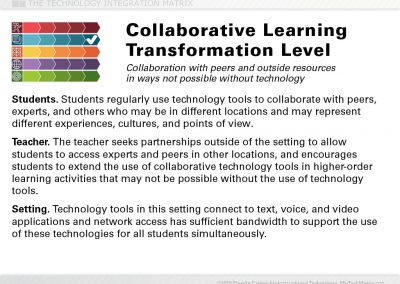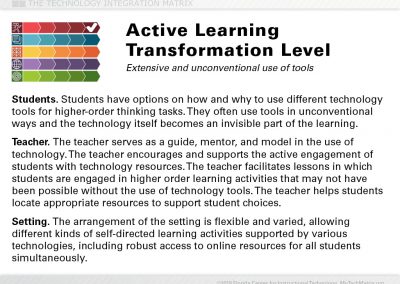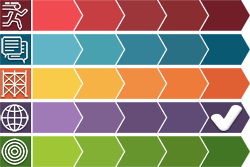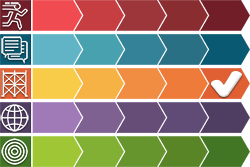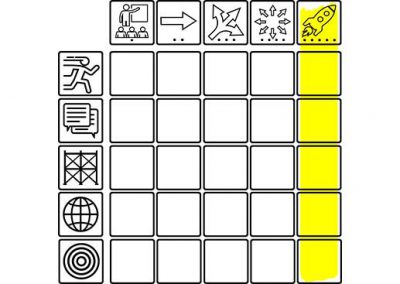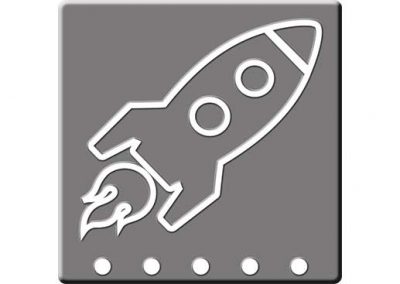The Transformation Level
The teacher encourages the innovative use of technology tools to facilitate higher-order learning activities that may not be possible without the use of technology.
![]() At the Transformation level, students use technology tools flexibly to achieve specific learning outcomes. The students have a conceptual understanding of the tools coupled with extensive practical knowledge about their use. Students apply that understanding and knowledge, and students may extend the use of technology tools. They are encouraged to use technology tools in unconventional ways and are self-directed in combining the use of various tools. The teacher serves as a guide, mentor, and model in the use of technology. At this level, technology tools are often used to facilitate higher-order learning activities that may not be possible, or would be difficult to accomplish without the use of technology.
At the Transformation level, students use technology tools flexibly to achieve specific learning outcomes. The students have a conceptual understanding of the tools coupled with extensive practical knowledge about their use. Students apply that understanding and knowledge, and students may extend the use of technology tools. They are encouraged to use technology tools in unconventional ways and are self-directed in combining the use of various tools. The teacher serves as a guide, mentor, and model in the use of technology. At this level, technology tools are often used to facilitate higher-order learning activities that may not be possible, or would be difficult to accomplish without the use of technology.
This page provides greater detail about the Transformation level of the Technology Integration Matrix. To see the entire matrix or to locate other levels, return to the Matrix. Descriptors for typical teacher activity, student activity, and instructional settings at the Transformation level are provided below, along with links to all of the Transformation level video lesson pages and additional resources.
Transformation Level Descriptors for Each of the Five Characteristics
Active Learning
Extensive and unconventional use of tools
Students have options on how and why to use different technology tools for higher-order thinking tasks. They often use tools in unconventional ways and the technology itself becomes an invisible part of the learning.
The teacher serves as a guide, mentor, and model in the use of technology. The teacher encourages and supports the active engagement of students with technology resources. The teacher facilitates lessons in which students are engaged in higher-order learning activities that may not have been possible without the use of technology tools. The teacher helps students locate appropriate resources to support student choices.
The arrangement of the setting is flexible and varied, allowing different kinds of self-directed learning activities supported by various technologies, including robust access to online resources for all students simultaneously.
Collaborative Learning
Collaboration with peers, outside experts, and others in ways that may not be possible without technology
Students regularly use technology tools to collaborate with peers, experts, and others who may be in different locations and may represent different experiences, cultures, and points of view.
The teacher seeks partnerships outside of the setting to allow students to access experts and peers in other locations, and encourages students to extend the use of collaborative technology tools in higher-order learning activities that may not be possible without the use of technology tools.
Technology tools in this setting connect to text, voice, and video applications and network access has sufficient bandwidth to support the use of these technologies for all students simultaneously.
Constructive Learning
Extensive and unconventional use of technology tools to build knowledge
Students use technology to construct and share knowledge in ways that may not be possible without technology. Their deep understanding of the technology tools allows them to extend the use of the tools in creative ways to construct meaning.
The teacher facilitates higher-order learning opportunities in which students regularly engage in activities that may be impossible to achieve without the use of technology tools. The teacher encourages students to explore the use of technology in unconventional ways and to use the full capacity of multiple tools in order to build knowledge.
The setting includes robust access to a wide variety of technology tools, robust access to online resources and communities, and the ability to publish new content online.
Authentic Learning
Innovative use for higher-order learning activities connected to the world beyond the instructional setting
Students explore and extend the use of technology tools to participate in higher-order learning activities that have meaning in the world beyond the instructional setting. Students regularly engage in activities that may not be possible without the use of technology.
The teacher encourages innovative use of technology tools in higher-order learning activities that support connections to the lives of the students and the world beyond the instructional setting.
The setting provides ongoing, independent access to a broad range of information, data, and source materials beyond the instructional setting. Robust, simultaneous access to a variety of technology tools allows all students to engage directly with others who may be in different locations and may represent different experiences, cultures, and points of view.
Goal-Directed Learning
Extensive and higher-order use of tools to plan and monitor
Students engage in ongoing metacognitive activities, and work on self-directed goals, at a level only possible with the support of technology. Students are empowered to extend the use of technology tools and have greater ownership and responsibility for learning.
The teacher creates a rich learning environment in which students regularly engage in higher-order planning, monitoring, evaluative, and reflective activities that may be impossible to achieve without technology. The teacher sets a context in which students are encouraged to use technology tools in innovative ways to direct and reflect on their own learning.
The setting includes robust access to a rich variety of technology tools and online resources to allow students many choices in how they independently set goals, plan, monitor, evaluate, and reflect upon their work.
View or print table as PDF:
US Letter
International A4
Understanding TIM Levels
The Invisible Technology Integration Matrix
There are also some “invisible” dimensions to the TIM. The invisible dimensions underlie the movement from left to right.... (Continue reading)
Tech Exploration in the Classroom
The emphasis on not only allowing, but also encouraging, exploration is no accident. In our busy schedules we.... (Continue reading)
What do we mean by “independent access”?
The spirit of independent use is that a student can evaluate a situation and choose the hardware or software that the student thinks will be most.... (Continue reading)
Ownership of Learning with Technology
One of the most important concepts behind the TIM is the ownership of learning. At lower levels of.... (Continue reading)
Transformation Level Videos: Active Learning Characteristic
Transformation Level Videos: Collaborative Learning Characteristic
Transformation Level Videos: Constructive Learning Characteristic
Transformation Level Videos: Authentic Learning Characteristic
Transformation Level Videos: Goal-Directed Learning Characteristic

